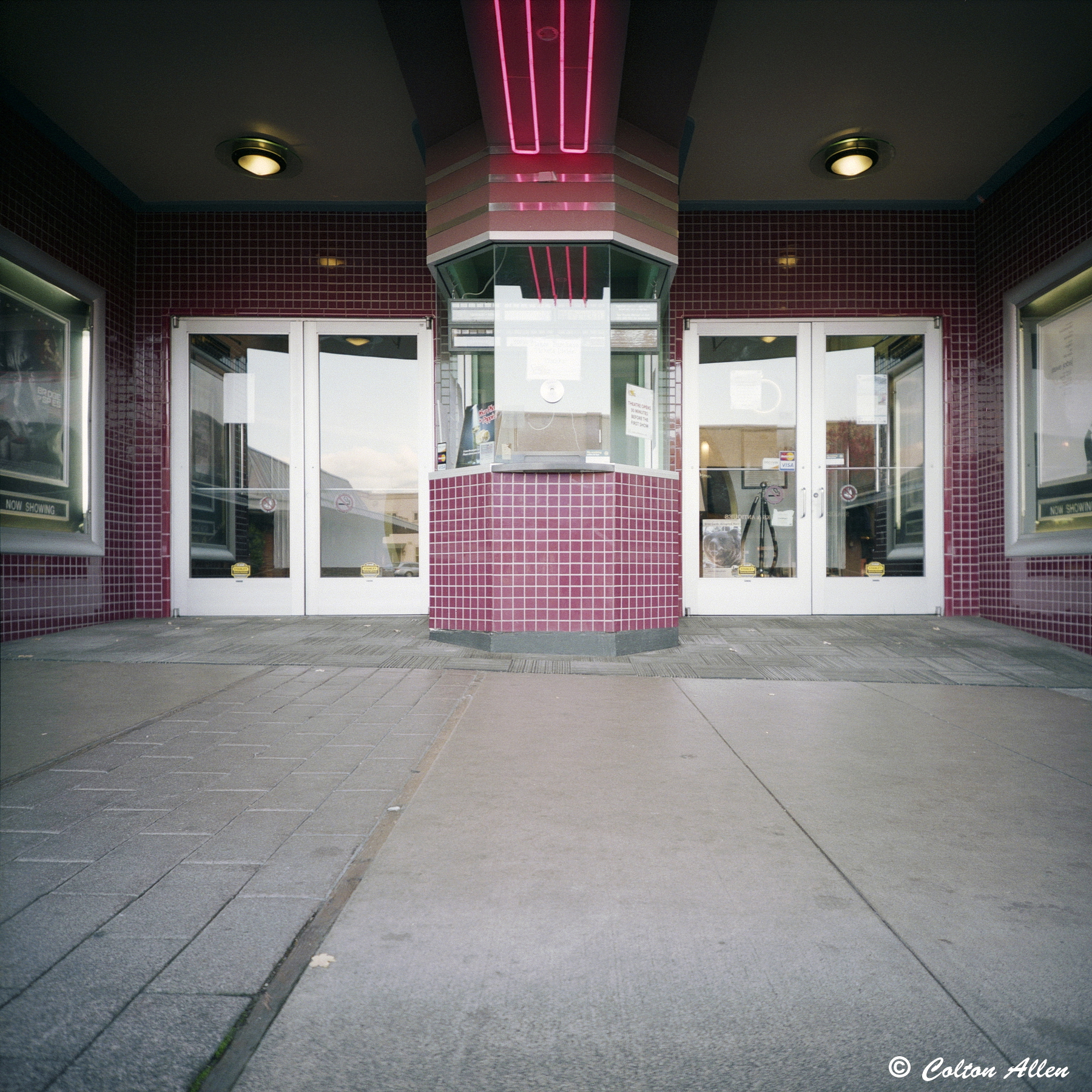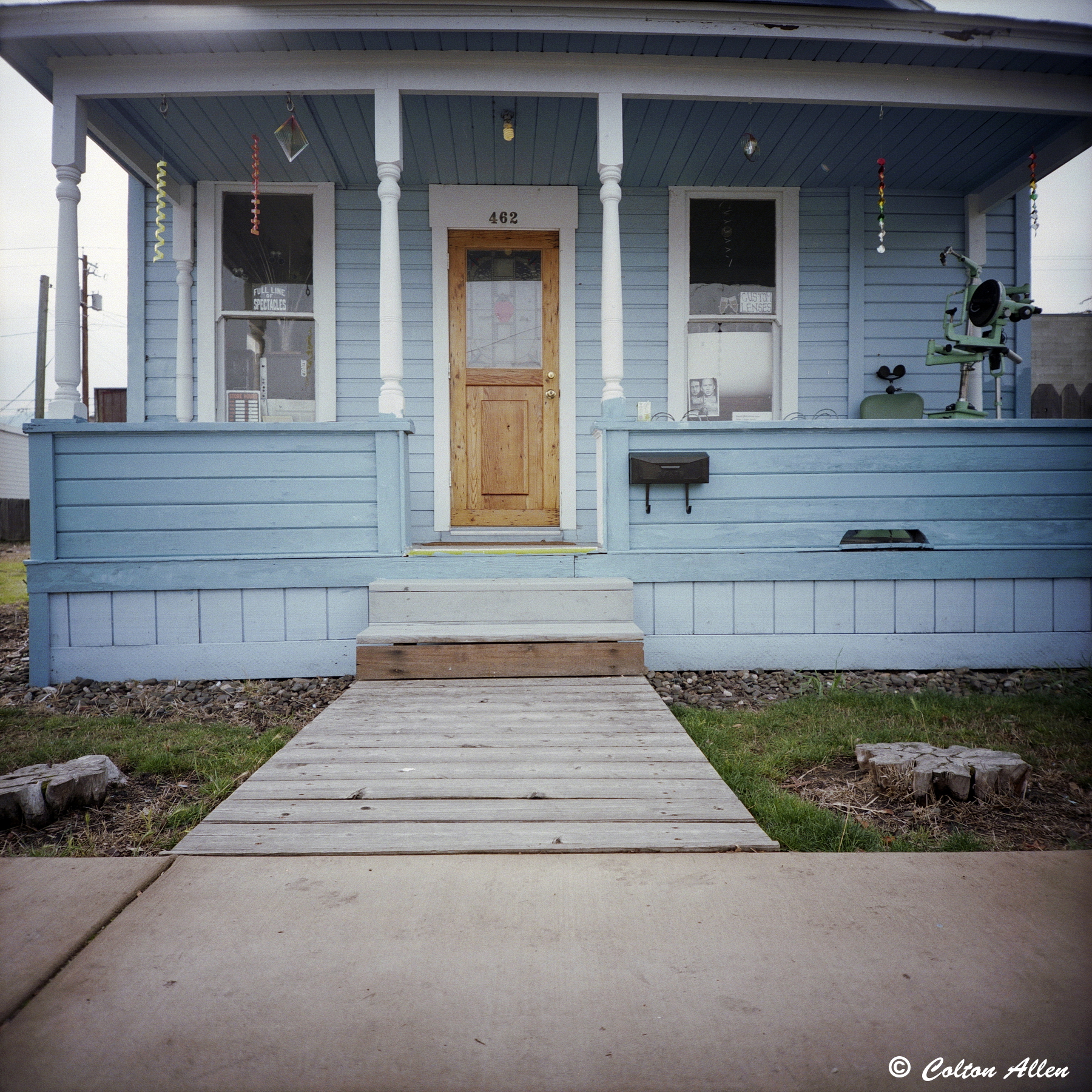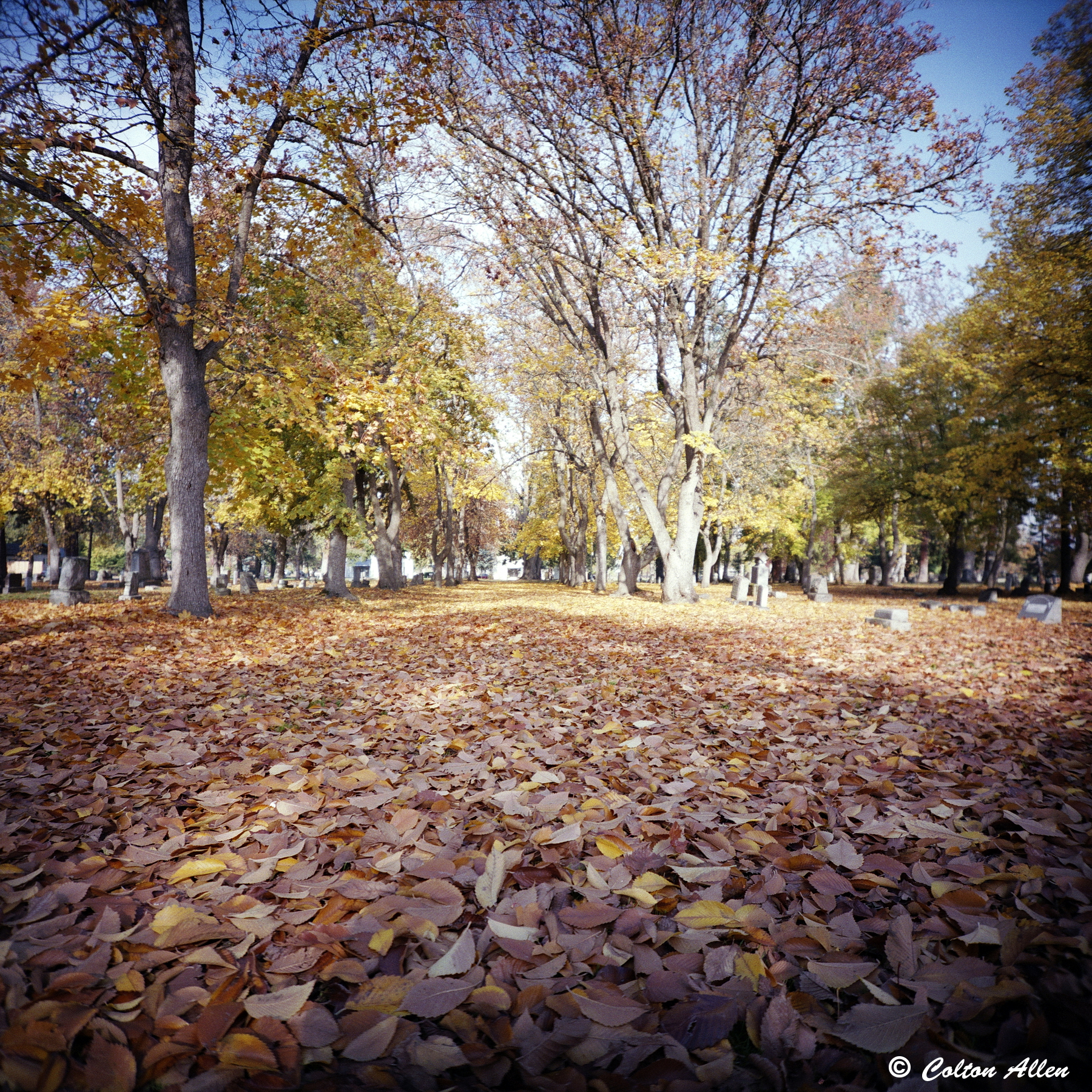When I first read about the new LOMO LC-A 120, I was really excited and couldn't wait to see what it could do. The LC-A 120 packs some really cool and unique features into a considerably small body. First and foremost is the Minigon 38mm f/4.5 lens, covering (mostly) a 6cm X 6cm frame. If you want 6x6 and 38mm, there is a rather limited number of choices. Secondly, the LC-A 120 features program auto exposure. These features, combined with the small body, make it a very interesting camera.
Recently I was given the opportunity to try out the LOMO LC-A 120, so I thought I'd share my experience.
I should state that I have no affiliation with the Lomo company, and that the camera was sent to me by Stephen Gandy at cameraquest.com
About Me
I feel it relevant to point out that, because of my unique situation, I am not really able to use the camera as was intended, and therefore can not review it from the perspective of most users. I am not able to lift the camera to my eye and use the viewfinder, and I wasn't physically able to press the shutter button. To take photos with the LC-A 120, I held the camera in my lap, composed blind, and then had an assistant trigger the shutter with a cable release. Also, because I have to get an assistant to do any settings, adjusting, loading, winding etc. I am going by their remarks about how the camera feels.
The Basics
The camera comes packaged very similar to the way my Diana F came. It comes with an instruction manual, a thin leather strap, 3 LR44 batteries, a cable release, and a small hardcover book of photos. The instruction manual is fairly basic but thorough. It only has text. It would have been handy to have a few diagrams, but the camera is pretty straightforward. I never used the strap or the cable release, choosing instead to use my own. The cable release felt kinda cheap, and the strap felt kinda thin and with the way I have to hold the camera, I was a bit worried about it breaking. I think the hardcover book is a really cool thing that Lomo does.
Build Quality
Overall, the camera seems decently built. It's mostly plastic, and was obviously built to a tight budget, but it feels sturdy enough, and electronics aside, the camera feels like it should hold up reasonably well. The focus lever is rather thin, but it is metal. The film door is metal as well. The shutter button is metal, but is a problem area which I'll discuss later. The wind knob is plastic and looks a bit cheap. The camera is covered in a grippy rubber/plastic type leatherette. It looks good and looks fairly tough, but is kinda loose at some of the edges.
In Use
The lens opens by sliding the whole front of the camera downwards. This also uncovers the viewfinder, and aligns the focus lever to the distance scale. This sliding mechanism is a bit stiff at first, but smooths out with use.
Film loading is fairly straightforward, but because the film chambers are a bit tight, it can be frustrating getting spools in and out. The spool locks are spring loaded. Flip the spool lock switch one way and it pops out, flip the switch the other way and it pops back in. The pins themselves are beveled to help get the spool in. I think they're kinda cool.
The wind mechanism is pretty straightforward. Wind until it stops, trigger shutter, wind again until it stops. Once you fire the shutter, it locks the shutter and unlocks the wind mechanism, allowing you to advance the film and preventing accidental double exposures. There is a multiple exposure switch that when activated allows you to trigger the shutter as many times as you like. The film transport/wind mechanism was another problem area, which I'll also discuss later.
The viewfinder seems fine. I never really used it, but did look through it a few times. It's not gonna compete with the Bessa R4M finder, but it will do the job. There are 2 lights that will come on in the viewfinder. One is the battery check light, which should come on every time you press the shutter button. If not, it means the batteries are dead. The other light is a warning light to alert you that the camera has chosen a slow shutter speed.
Film speed is set with the small dial beside the viewfinder on the front of the camera. I found that the camera seemed to meter and expose quite accurately, even in some tricky lighting conditions.
Focusing is a simple four zone focusing system. The small lever clicks into each zone. I had a few instances where I took a photo thinking it was on one setting, and it had been bumped and moved, so it's good to check it every shot. I also found the distance scale to be slightly inaccurate. The infinity setting is more of a foreground biased hyper-focus setting, and the 2.5 meter setting is probably more like 1.5 meters. I imagine that there is some sample variation here.
The Bad
The shutter button itself is rather difficult to push. It's sort of a not very smooth, spring loaded affair. It gets harder and harder to push as it goes down, until it hits a hard spot that once you push past, the shutter fires. Because of this, I couldn't actually use the shutter button, and instead used a cable release. I think that with the camera I used, there is some problem with the cable release mechanism, because on all three rolls that I shot, I ended up with random blank frames. As near I can figure, the cable release would actuate everything, the camera would click, but the shutter wouldn't fire. I thought it might be an issue with the particular cable release that I was using because after the second roll, I tested it indoors without film in the camera and sure enough, randomly I would hear a click but no shutter movement at all. I then tried a different cable release, and during testing, the shutter worked correctly for 20 out of 20 tries. So I loaded a third roll, and only used that cable release, but still got blank frames. I think that if I could use the shutter button only, the this issue may not come up, but regardless of that, the camera should work properly every time a cable release is used.
The other major issue I had with the LC-A 120, was with the film transport and frame spacing. With both my first 2 rolls of film, the frame spacing was so big that I only got (if I count blank frames) 10 and 1/2 frames per roll. On my third roll, I cut 2 1/2 inches of paper off the end of the leader, and the frame spacing was about what it should be. This issue almost bothers me more than the blank frames. The shutter issue seems like a unit specific issue, that needs repair. The frame spacing issue seems like poor design and build, and from my small amount of research, it seems like it may or may not affect every single LC-A 120. The sad thing is that they easily could have just done simple wind knob and a red window in the door, and they could have sold the camera for less money.
The Good
The saving grace of this camera, and really the only reason I would consider buying it, is the lens. I have to admit that the lens on the LC-A far exceeded my expectations. Really the only camera you can compare with the LC-A 120 is the Hasselblad SWC. Not really a fair comparison, and obviously the SWC is a much better camera. They both have a 38mm f/4.5 rectilinear ultra-wide lens though, and when you look at the size of the Zeiss Biogon and compare it with the size of the Minigon, it's kinda amazing that it actually (basically) covers the 6x6 frame. Optically, the Minigon can't really compete with the Biogon, but it's no slouch either. There is a fair amount of light falloff in the corners, but it's a lot better in this regard than I expected. There is also a fair loss of sharpness in the corners, which is unfortunate, but understandable given the size of the lens and the angle of view. Going through my images, the lens does okay. There is some stretching in the corners, and as near I can tell, there is slight barrel distortion at the edges, and then it shifts to slight pincushion distortion in the middle of the frame. Actually... on paper it doesn't sound like it's all that good... but then you see the images it makes. The ultra-wide angle, the vignetting, the colors, etc. It all works together to to give images with a dramatic expansiveness. The lens really makes the LC-A 120 a unique camera, and it deserves to be judged on its merit.
Conclusion
When the Lomo LC-A was first announced, and to this day, there was/is a lot of outrage because of the price Lomo decided to charge for the camera. I mean really, who do they think they are? $430 for a Lomo? That's robbery isn't it? Hell, my Rolleiflex 2.8C cost less than that!
Well, I don't know. I do know that to design and build, and package a new camera in today's world can't be cheap. And it's not really fair to compare the price of a new camera with the cost of a 60 year old used camera. Naturally, when the camera was released, the big question was whether it was worth the price or not. I can't really answer that question for other people, but I can give you my answer to that question. Right now because of the way I have to use the camera, and because it is unreliable when using a cable release, I probably won't be buying one. I could live with the frame spacing issue, using a workaround, even though you shouldn't have to use a workaround with a brand new $430 camera. The one thing I can't live with is not knowing whether the camera actually took a photo or not. When I take a photo, I need to know that the camera got the photo. It's too bad though... because I love the images the LC-A 120 produces...
Film photographer, Colton Allen is based in Oregon. Connect with him on Flickr, Instagram, and Facebook. You can also see more of his work right here on our website.








